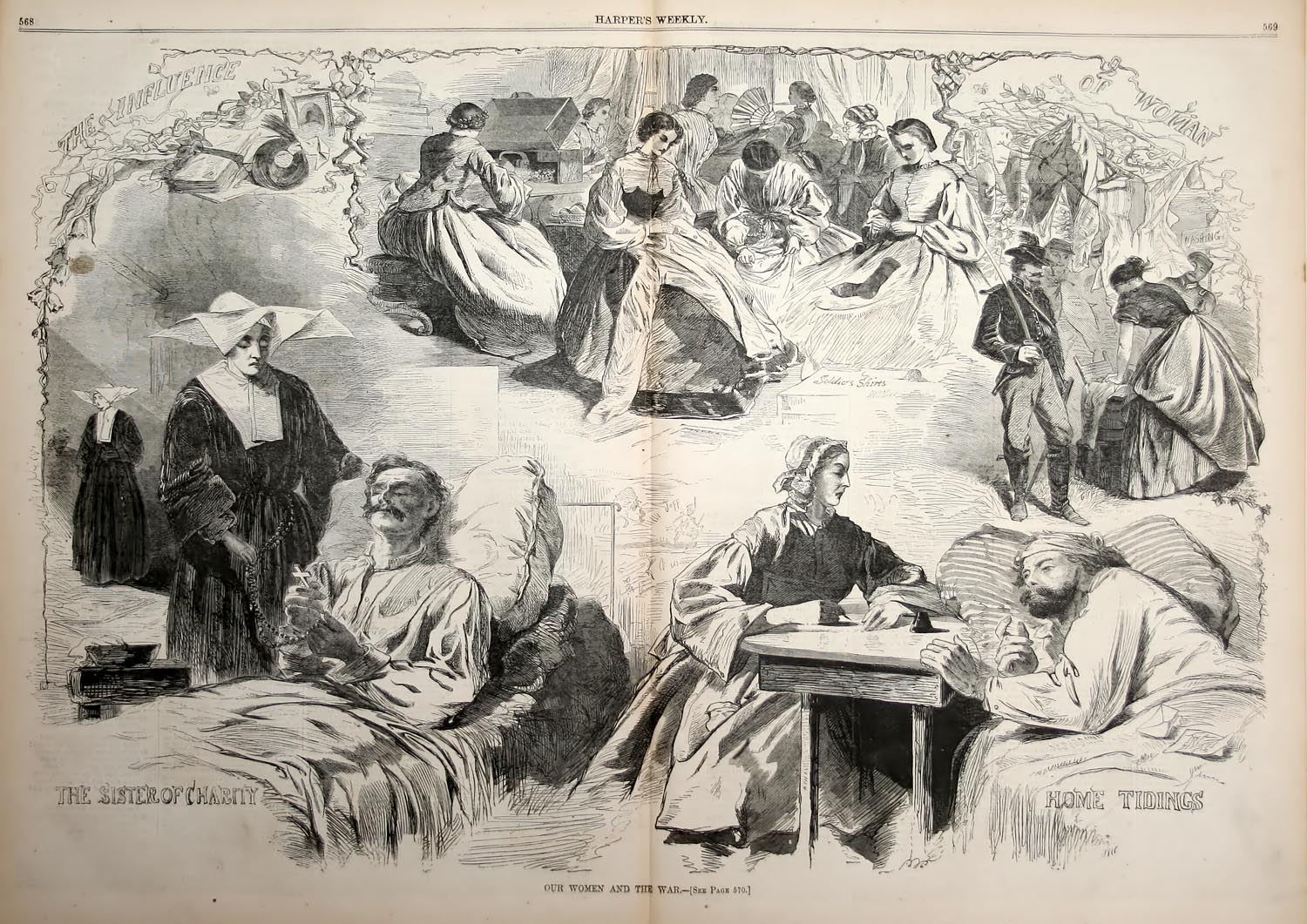During the time of the war, 1861-65, risk of infections and communicable diseases were very, very high. A soldier had twice the likelihood of dying from infection and infectious diseases than from dying on the battlefield. Being hospitalized was treated as a death sentence. Medical care then was very primitive. The Union army surgeon general said that the Civil War was fought, "At the end of the medical Middle Ages." Some soldiers undergoing surgery, even amputation, received little or no anesthesia. It has been estimated that anesthetics were used no less than 80,000 occurrences. One man described a usual surgeon's tent like this:
"Tables about breast high had been erected upon which the screaming victims were having legs and arms cut off. The surgeons and their assistants, stripped to the waist and bespattered with blood, stood around, some holding the poor fellows while others, armed with long, bloody knives and saws, cut and sawed away with frightful rapidity, throwing the mangled limbs on a pile nearby as soon as removed."
And although scenes like this were frightening, most soldiers received anesthesia, most commonly chloroform. Also, the screams heard from inside the tents were usually just a witness. But mortality rates for hip amputations were about 83%, and upper arm/shoulder amputation mortality rates was about 24%.
This photo is a surgery kit from the Civil War era, used for surgeries and amputations.
The image above is Clara Barton, a pioneer in medicine during the Civil War.
This is a chloroform inhaler, used to breathe in the chloroform for surgeries and other anesthesia-requiring procedures.
"Tables about breast high had been erected upon which the screaming victims were having legs and arms cut off. The surgeons and their assistants, stripped to the waist and bespattered with blood, stood around, some holding the poor fellows while others, armed with long, bloody knives and saws, cut and sawed away with frightful rapidity, throwing the mangled limbs on a pile nearby as soon as removed."
And although scenes like this were frightening, most soldiers received anesthesia, most commonly chloroform. Also, the screams heard from inside the tents were usually just a witness. But mortality rates for hip amputations were about 83%, and upper arm/shoulder amputation mortality rates was about 24%.
Many women volunteered to be nurses during the war. Dorothea Dix, the Union army's director of nursing, declared that all female nurses had to be 30+ years old, plain-looking, and strong. Clara Barton, the founder of the American Red Cross, was a great person. She would travel around with the soldiers, often going out to treat the wounded on the battlefield.
In the book Rifles for Watie, the main gets malaria and since the army can't travel around with him, he is stationed in a civilian household for multiple months until he gets better. This sort of treatment was very common.
This is a bottle of Quinine, a medicine that helps against malaria. This was a very important medicine, as malaria was very widespread.
This photo is a surgery kit from the Civil War era, used for surgeries and amputations.
The image above is Clara Barton, a pioneer in medicine during the Civil War.
This is a chloroform inhaler, used to breathe in the chloroform for surgeries and other anesthesia-requiring procedures.





No comments:
Post a Comment